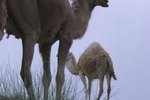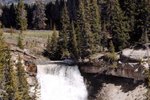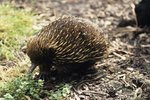
Located on the Sicily coast, Mount Etna is among the world's most active volcanoes. Despite its frequent eruptions, a large variety of animals live on Mount Etna and within its national park, which spans 224 square miles.
Mammals
Although larger mammals who used to inhabit Mount Etna -- such as deer, wolves and wild boar -- have been wiped out of the area due to hunting, more than 40 mammal species still exist there. Commonly seen residents include foxes, martens, mice, weasels, squirrels, hedgehogs and porcupines. The abundance of small animals encourages a large raptor population in the area.
Birds
More than 200 species of bird can be found on Mount Etna, including a large number of predators. You can hope to see diurnal raptors such as buzzards, kestrels, peregrine falcons and the odd golden eagle. Plenty of nighttime hunters, including barn owls and tawny owls, live on Mount Etna. Other birds who live in the area include rock pigeons, cuckoos, sight jays, rock partridges, herons, ducks and various tits.
Reptiles and Amphibians
Several types of amphibians live on Mount Etna's slopes. The majority of species are either frogs or toads, but even some turtles live within the area's lakes and streams. More than 40 reptile species live in Etna National Park. The majority of these are completely harmless to humans, but some venomous vipers should be watched out for. Their numbers have risen in recent years due to a reduction in the amount of predators in the area.
Arthropods
Countless different arthropod species live on Mount Etna -- mostly insects and arachnids. Many types of spiders, bees, wasps, butterflies, crickets, locusts, flies, ants and other such creatures live in the area. They all play important ecosystem roles, whether pollinating flowers, providing food for other species, preying on other species or any number of other functions.
References
Photo Credits
-
Comstock/Comstock/Getty Images




